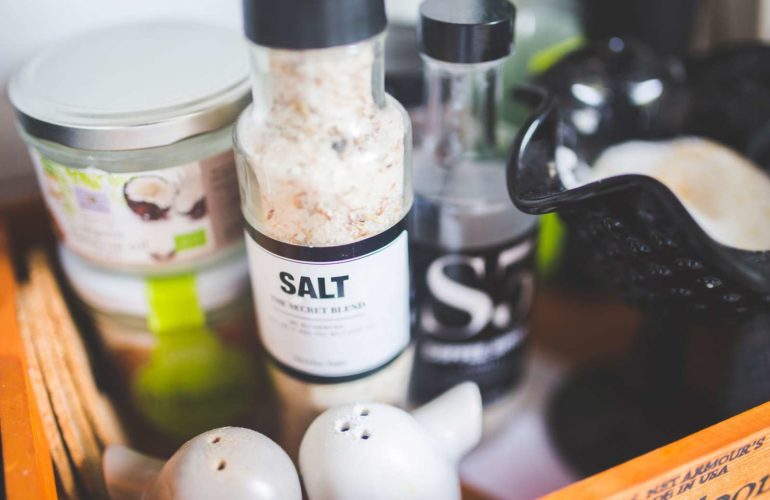Not all salts get made in the same way. It is imperative that you know about all types of salts that are available to understand which salt is the best for you. There are huge differences between white table salt and the himalayan pink salt. This article will bring out the main differences, benefits and possible side effects on overusing these salts. Salt is essentially important for the human body. However, salt must be consumed in moderation. The type of salt we use can affect out health in a number of ways. Good quality salt can help promote our fitness in a big way.
Which salt is best for your health ?
- Salt is made up of the following
- 95-98 % sodium chloride
- About 40 % sodium
- And 60 % chloride
- Sodium is an electrolyte and mineral
- Benefits and functions of sodium
- Sodium is very important for maintaining electrolyte balance in the body
- It helps maintain water balance in the body
- Sodium is responsible for nerve signalling in the body
- Sodium is required by the muscles for functioning
- It helps in absorption and transportation of nutrients in the body
- Sodium is known to help maintain BP in the body
How much sodium in a day ?
- 1600-2400 mg that is 3/4 tsp to 1.5 tsp sodium is suitable in a day
- The pickles, sauce, snacks and dips which you buy from the store are all loaded with sodium
All about table or white salt
- White salt is chemically refined to clear impurities
- This means that this salt is processed at a very high temperature
- It is bleached and anti caking agent is added to the salt so that it doesn’t clump
- This salt has the maximum amount of sodium in it
- This salt also has a very sharp taste
- It has zero trace minerals
- Table salt is fortified with iodine
– Table salt is mixed with iodineto prevent iodine deficiency in the masses
– This is a easier way to discharge / distribute iodine to a large group of population simultaneously
– According to WHO, iodine is essential for healthy brain development of children
– The recommended consumption of iodine in adults over 18 years of age is 150 mcg everyday
- This salt is cheaper as compared to other salts
All about pink salt and black salt
- This salt occurs in the mines of ancient seabed
- Pink salt is naturally harvested by hand
- The colour pink is due to presence of iron oxide in this salt
- Pink salt has more than 80 trace minerals in it
- This salt is easily metabolised by the body
- It contains lesser sodium as compared to the table salt
- This salt is famous for medicinal properties
- It is used in ayurveda for internal cure and external application
- Pink salt is cooling in nature, it promotes digestion, has laxative properties
- It helps reduce muscle cramps and is also good for respiratory health
- The pink salt is less sharp and more tasteful
- One disadvantage of this salt is that people take the liberty of consuming it more as it is considered healthy
Comparison
| All figures in mg | Pink Himalayan salt | Table salt |
| Calcium | 1.6 | 0.2 |
| Potassium | 2.8 | 0.9 |
| Magnesium | 1.06 | 0.0139 |
| Iron | 0.0089 | 0.091 |
| Sodium | 368 | 381 |
All about sea salt
- Sea salt has naturally occuring iodine in it
- It may have impurities and heavy metals
- Sea salt is rich in minerals from the sea
- It contains magnesium, calcium, potassium, iron, zinc and iodine
Bottomline
- For cooking on high heat, use table salt
- For sprinkling and seasoning on soup, salad, drinks etc use roak salt
- Use a mixture of both table and rock salt for daily use
- Combine and store white and rock salt for general use to avoid iodine deficiency and get benefits of rock salt
